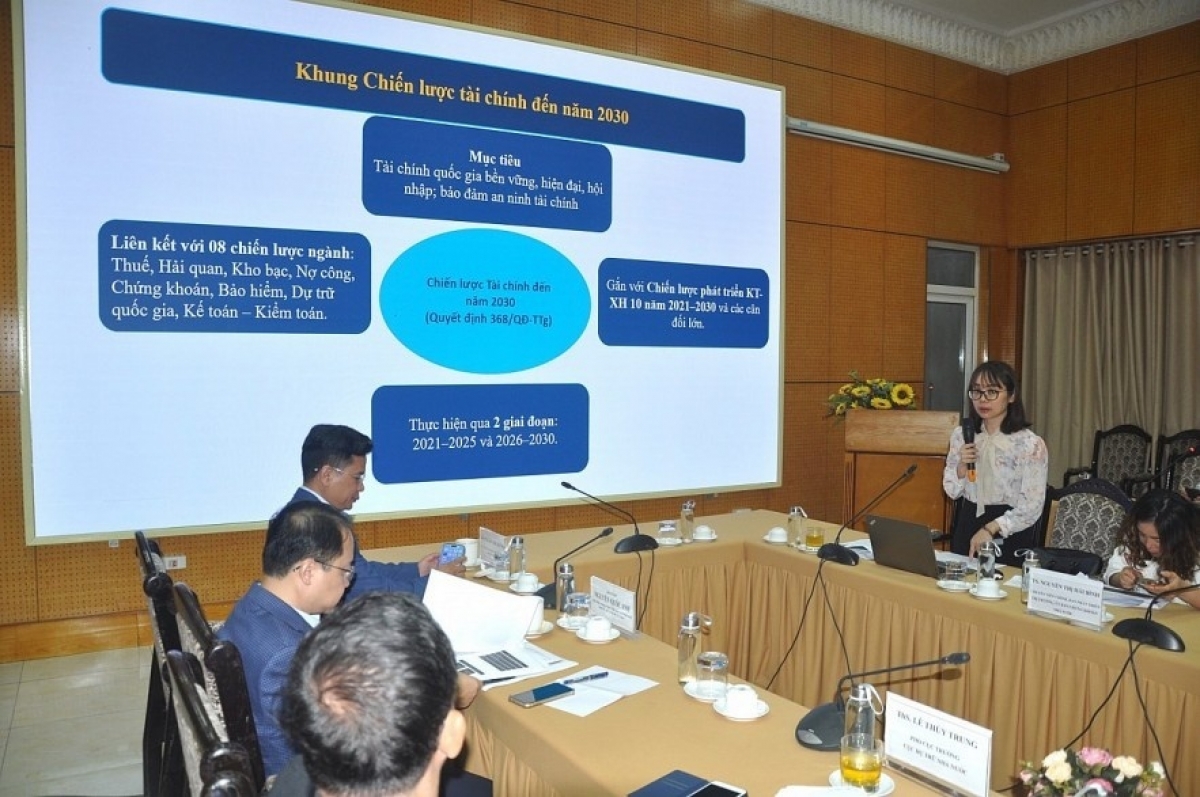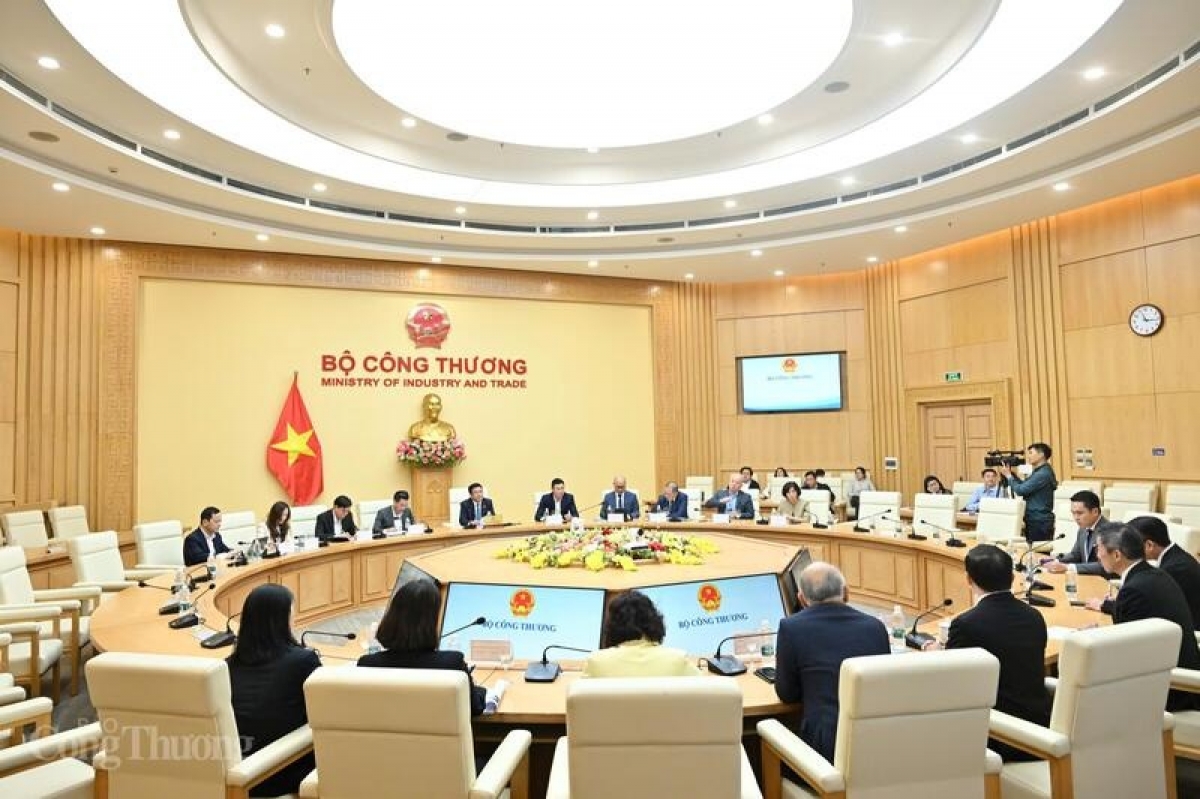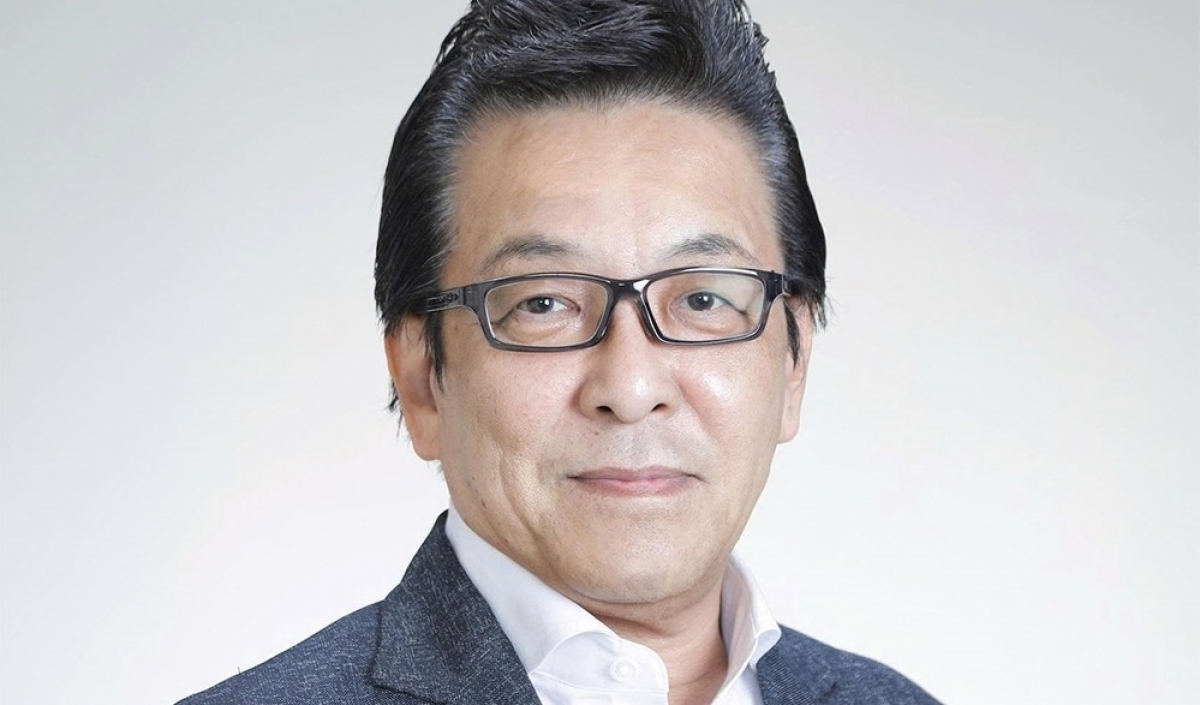INTERNATIONAL INVESTMENT
AND PORTAL
However, the complex technical nature of the industry will pose challenges not seen in other industries. Targeting development in the correct sectors of the value chain and addressing current challenges will be crucial to whether Vietnam can continue to grow its burgeoning semiconductor industry.
The potential of Vietnam’s semiconductor industry has been highlighted by recent diplomatic and commercial visits to Vietnam.
During US President Biden’s September trip to Vietnam and the historic upgrade of the relationship to a comprehensive strategic partnership, cooperation on semiconductors was a focal point. Biden announced plans to work more closely with Vietnam in semiconductors and was accompanied by a business delegation that included leading US semiconductor companies, such as Intel, Amkor, Marvell, and GlobalFoundries.
Partnering with foreign companies that are industry leaders in semiconductors will be integral to the development of the industry in Vietnam.
Only four Vietnamese companies are currently involved in chip design, predominantly in lower-end chip design, and none have manufacturing inside Vietnam. The top semiconductor companies are primarily headquartered in the US, South Korea, Taiwan, Japan, and China, but have operations that span the globe.
Making a chip takes some 4-6 months and involves more than 500 separate steps that may see a product and its components cross international borders up to 70 times. This means no one company – or country – can wholly produce a chip on its own.
Dynamic shifts in the industry, are creating opportunities for new markets, like Vietnam, to join the global supply chain and enter an industry valued at $578 billion last year and expected to grow to $990 billion by 2030.
Though semiconductor supply chains are remarkably complex, segmented, and international, they have a value chain that can broadly be broken down into three sectors – design; fabrication; and assembly, testing, and packaging (ATP).
Prior to the recent enhanced push to de-risk supply chains, nearly 40 per cent of the ATP sector was in mainland China and another 27 per cent in Taiwan. This has traditionally made the ATP sector one of the most concentrated in the industry. With an emphasis on de-risking critical supply chains from China, this represents a tremendous opportunity for Vietnam to build on its experience and infrastructure in the ATP sector.
Intel has its largest global ATP facility in southern Vietnam and Amkor operates multiple plants in Vietnam, with both companies’ investments in Vietnam dating back to 2005. More recently, Samsung has announced plans for a $2.6 billion facility in the sector in northern Vietnam and various other companies have made ATP investments within the past few years.
Investments in this sector, predominantly from US companies and some South Korean companies, have driven growth in Vietnam’s exports of chips.
Vietnam’s chip exports to the US grew 75 per cent in 2022 to reach a volume $562.5 million and a market share of 11.6 per cent. This made Vietnam the fastest-growing chip exporter to the US and third-largest by volume, behind only Taiwan and Malaysia.
However, the ATP sector is the lowest-valued sector in the semiconductor supply chain, only accounting for about 6 per cent of a chip’s value, and Vietnam’s contributions to the overall semiconductor supply are considerably smaller.
Fabrication facilities, or fabs, are the most capital-intensive and geographically concentrated part of the value chain. Though much fewer in number, fabs in Southeast Asia predominantly centre around Singapore and Malaysia.
Vietnam currently has no fabs, but the government has announced plans to have the first fab in Vietnam completed by 2030 and vowed to support this effort with the highest incentives available.
With costs to establish a fab typically over $1 billion running up to $20 billion, these incentives will contend with subsidies from the US, China, South Korea, and the European Union, who have all announced semiconductor spending plans of between $50 and $150 billion each.
Vietnam will likely not compete with these markets directly and instead target fabs producing less advanced chips, such as those used in cars or for telecom applications. Here Vietnam would compete more directly with India, Thailand, and to some extent, Malaysia, all of whom have introduced policies to attract similar investments.
Meanwhile, the availability of highly skilled semiconductor engineers will determine Vietnam’s success in this sector. The nation currently has 5,000-6,000 semiconductor engineers. This is less than 20 per cent of the current industry demand in Vietnam and is well below the forecasted 20,000 needed in the next five years and 50,000 needed in the next 10 years.
The government has announced an ambitious plan to train 30,000-50,000 engineers by 2030, but this would be up to a 10-fold increase in six years for a country that currently graduates only about 500 such engineers per year.
The engineers Vietnam does have typically specialised in specific phases or certain processes, and there are fewer at higher levels who can oversee larger projects or finalise designs. Even with plans to graduate more engineers, the industry is characteristically conservative and typically prioritises experience, given mistakes can cost millions and take years to repair.
As Vietnam looks to expand its semiconductor industry, the challenges it faces are not unique to Vietnam. Other emerging semiconductor markets similarly looking to move up the value chain, primarily into design and fabrication of less technologically advanced chips, will face similar infrastructure and skilled labour challenges.
Many of the factors that have made Vietnam an attractive destination for investment in other industries will apply to the semiconductor industry. Vietnam’s already strong presence in the semiconductor ATP sector provides a basis from which to move up the industry’s value chain.
However, this established ecosystem may also present challenges for Vietnam in higher-level sectors of the value chain, where semiconductor clusters have traditionally driven growth and innovation, as seen in Silicon Valley and Taiwan. Vietnam’s long north-to-south geography has seen very different segments of the industry develop in the hubs Hanoi and Ho Chi Minh City at present.
In the short-term, we should see continued growth in the ATP sector in Vietnam. With the ATP sector becoming technically more advanced and increasingly important, especially in the value of higher-end chips, Vietnam can leverage this technical sophistication with investment in education and infrastructure, to move into the higher-value semiconductor sectors of design and ultimately fabrication.
Similar to the growing export processing and manufacturing industry in Vietnam, where 70 per cent of Vietnam’s export value comes from foreign-invested companies, growth in Vietnam’s semiconductor industry will be driven by foreign-invested companies, and the majority of products assembled or produced in Vietnam will be for export.
Given the investments already made in Vietnam’s semiconductor industry and the market share held across sectors of the semiconductor value chain, US and South Korean companies will likely drive growth.
With efforts by the government to make the necessary domestic investments, working with government stakeholders, and cooperation with leading global semiconductor companies, Vietnam’s semiconductor industry has the potential for varying near- and long-term growth in all sectors of the value chain.
Vietnam hopes Samsung become a strategic investor in the context that the country is building a strategy to develop the semiconductor industry and promote innovation, Deputy Minister of Planning and Investment Nguyen Thi Bich Ngoc has told General Director of Samsung Vietnam Choi Joo Ho.
 US businesses focused on semiconductors, clean energy, carbon reduction
US businesses focused on semiconductors, clean energy, carbon reduction
Under Secretary of State for Economic Growth, Energy, and the Environment Jose Fernandez shared the direction of cooperation with Vietnam in the fields of semiconductor chips, clean energy and carbon reduction at a meeting with members of the American Chamber of Commerce in Ho Chi Minh City on January 24.
Professor Nguyen Dinh Duc, Vietnam's pre-eminent scientist and the only one recognised among the world's top 100 influential figures in engineering and technology, spoke with VIR's Manh Bon about how semiconductor manufacturing represents a pivotal opportunity for Vietnam.



















